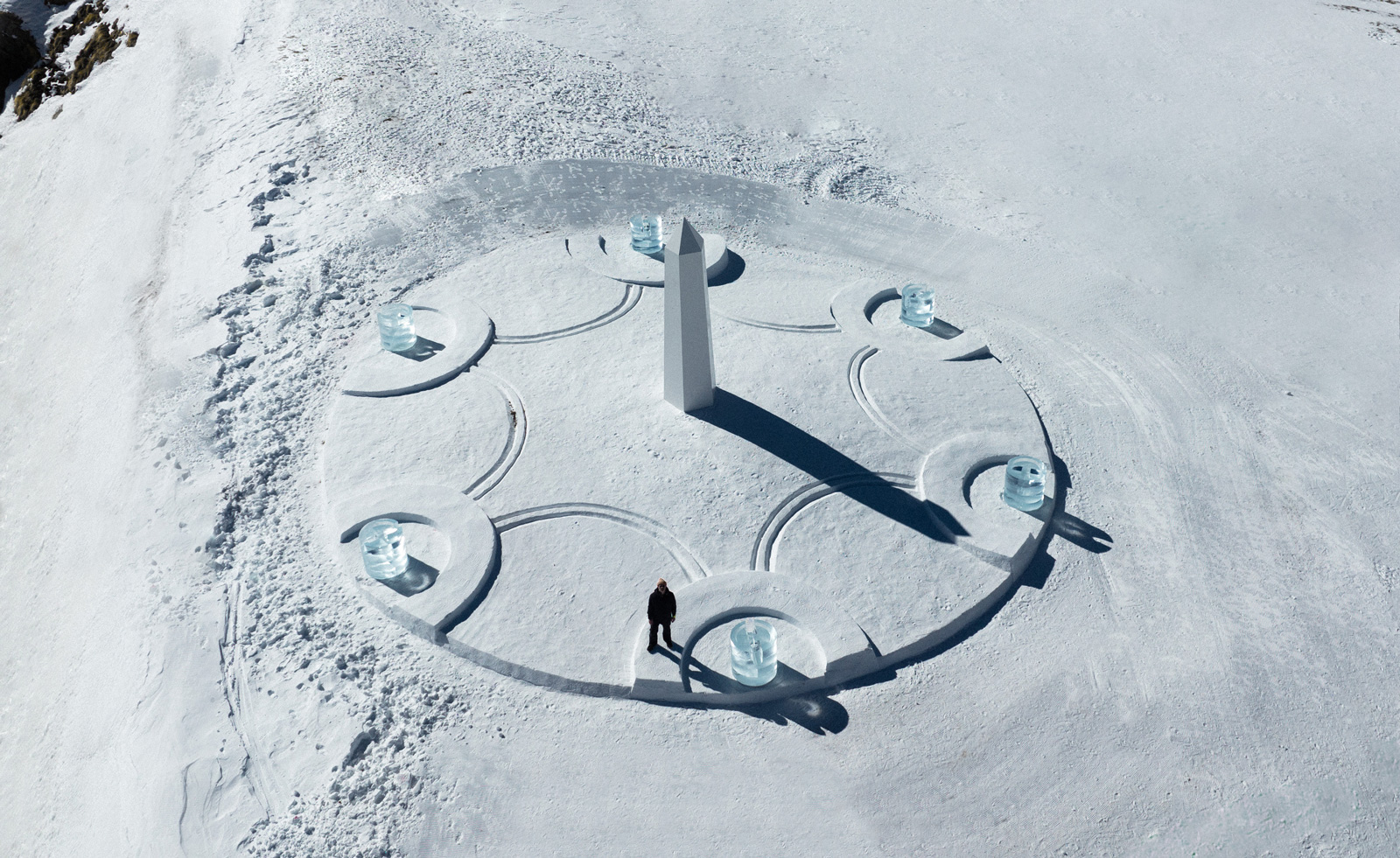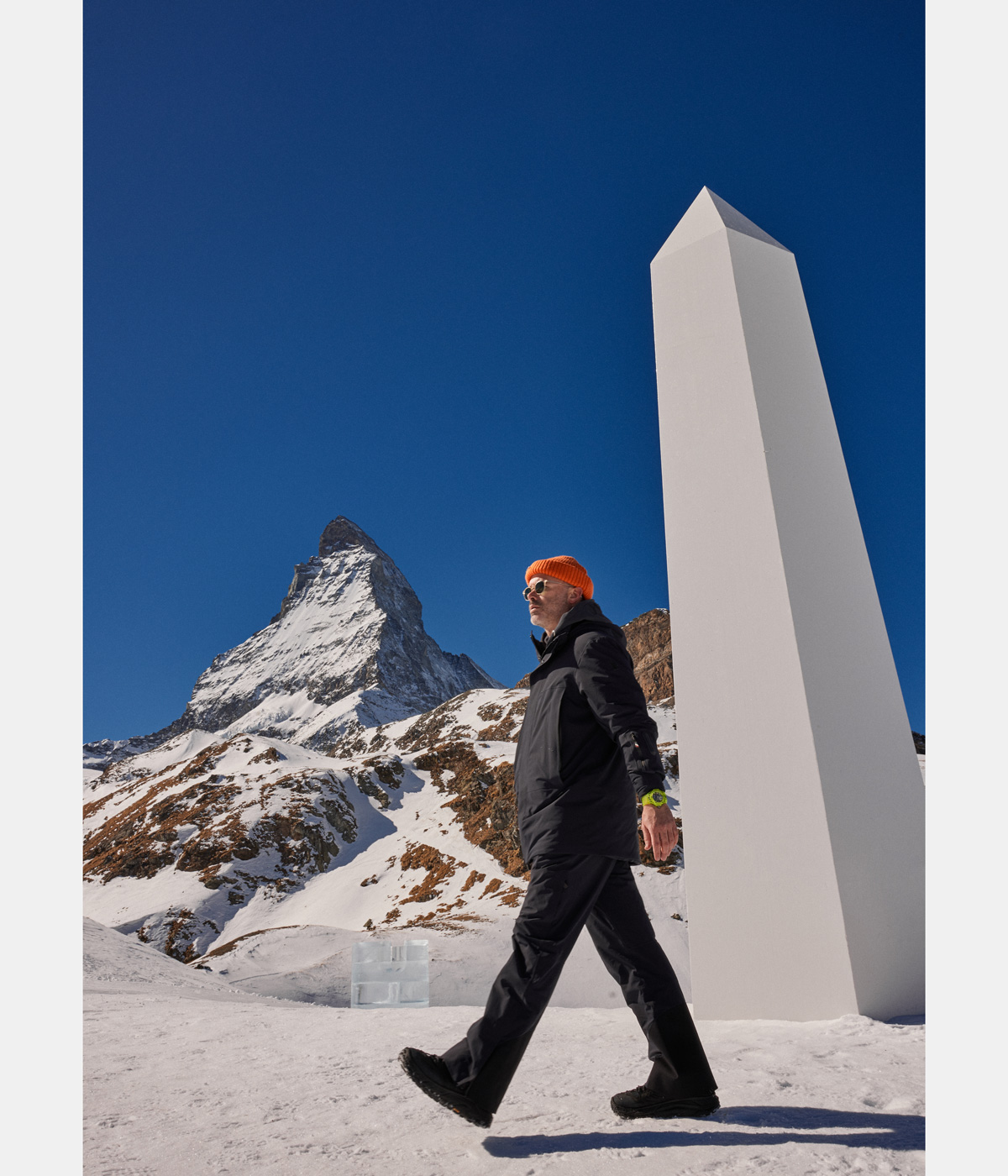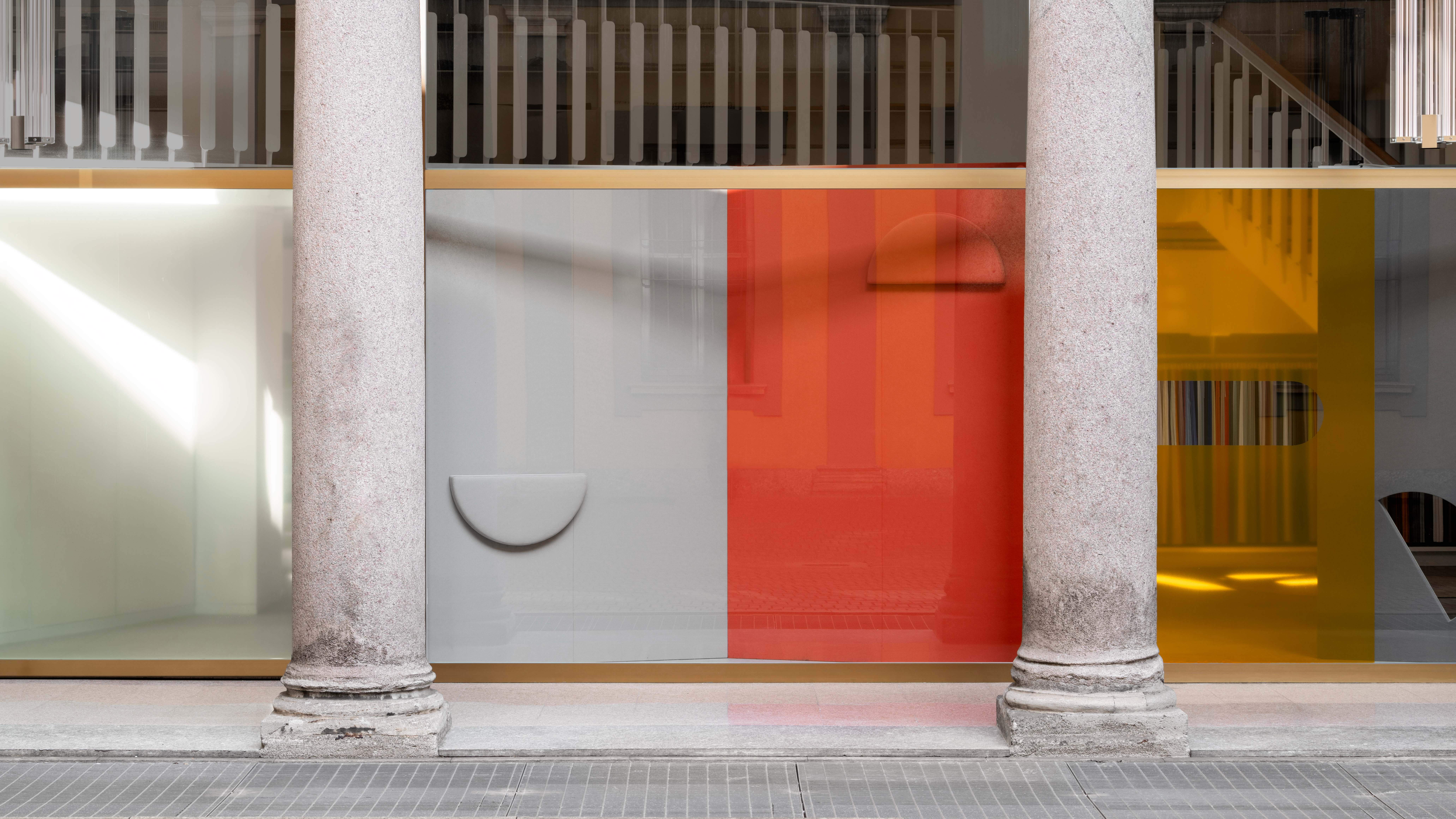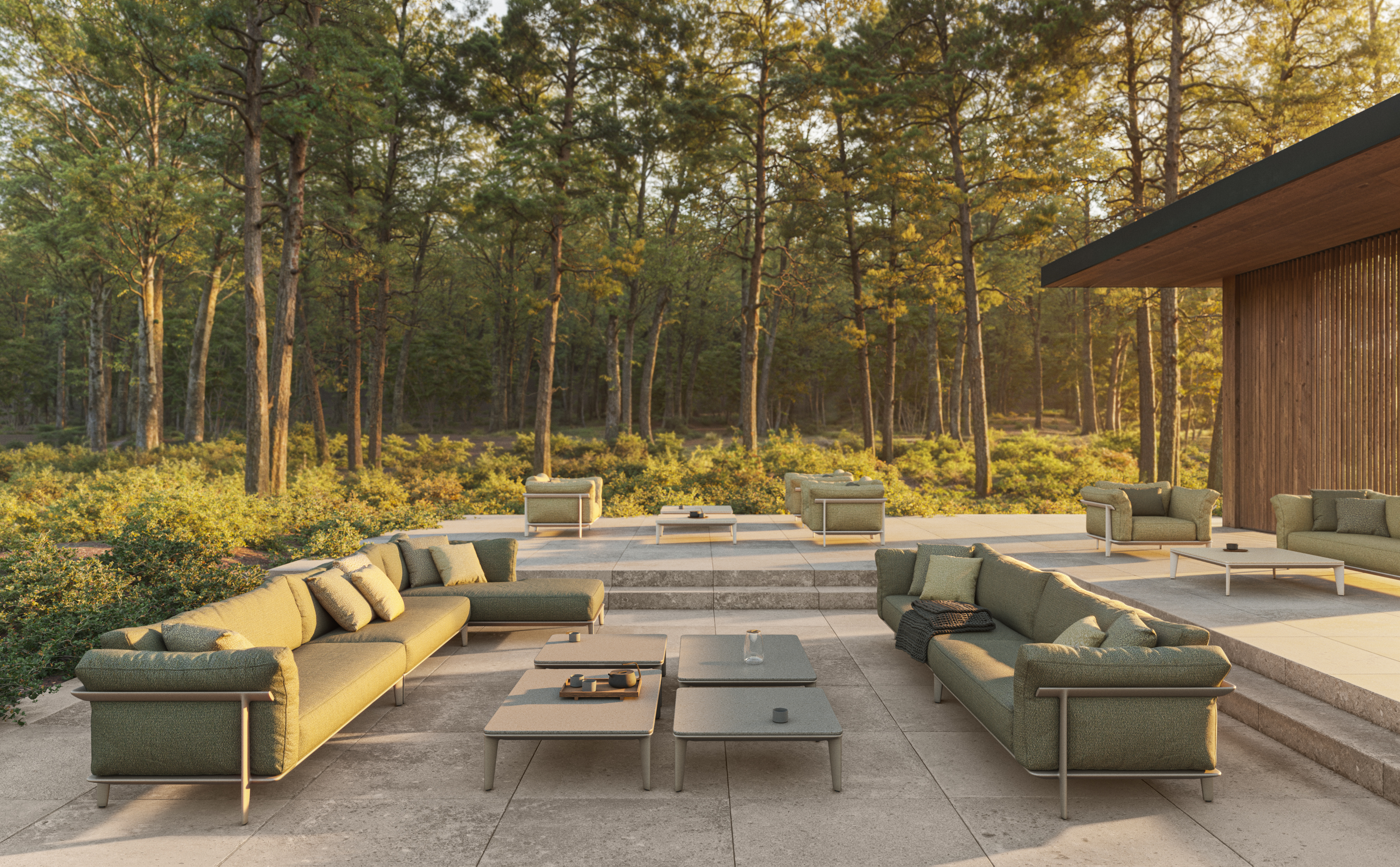Daniel Arsham unveils ‘Light & Time’ installation for Hublot
American artist Daniel Arsham has created a temporary installation piece on the slopes of Zermatt for Hublot

The latest creative to team up with the Swiss watchmaker Hublot is none other than the American artist Daniel Arsham. The inspired union was announced with the unveiling of a temporary installation piece on the slopes of Zermatt, encapsulating Arsham’s unique relationship with time. Taking the shape of a 20m sundial, embedded in the snow of the Swiss ski resort, at a height of 2,853m, the jaw-dropping, ephemeral installation, succinctly titled Light & Time, is formed partly of snow to simultaneously pay homage to both the tradition of land art and timekeeping.
The fully functional sculptural installation is based around the shadows cast by the sun shining on a quartz crystal-shaped obelisk. This central pointer thus marks time in the most simple way, albeit with a true Arsham twist. The face of the snow dial features a restrained relief pattern echoing Hublot’s design language, which has been etched out of the snow. The familiar cues also include the recognisable screws that hold the Big Bang’s bezel in place. Best of all is that the installation will only be visible from the top of the mountain – art lovers and visitors must ride Zermatt’s ski lifts to view the creation from above.

Located in the shadow of the Matterhorn, Zermatt was a natural location for this singular work. Arsham says, ‘I visited the [Hublot] factory, which is about two and a half hours from [Zermatt]. I started to think about what could be an appropriate installation that wouldn’t be too specific, that would be about time. I’ve always been fascinated with sundials or sun clocks. We didn’t know [if it would be] winter or summer, but [given] the connection with Hublot in Switzerland and this region, we started developing the idea to create a sun clock that would be made out of materials that are ephemeral. When you see the installation, it’s made out of ice and snow. Not only is [it] this thing that tells time and captures time, but it will also disappear and be erased by it.
‘I’ve never worked with these [natural] materials before, so a little bit of it was trial and error. We worked with a team that does a lot of the grooming on the mountain so they’re very familiar with it. It was a bit of a collaboration with the snow-making team here,’ adds Arsham, about how the concept became a reality. ‘The siting of the work is both in relation to the Matterhorn, the Zermatt sign where everyone takes pictures, but also you can see it from the Gondola as you ski down. There [are] different perspectives [and] it’s something you have to walk around in order to experience. The ice [also] changes dramatically throughout the day. It catches like the sapphire of the watches, it catches and refracts light as you move through it.’

To create the installation, Arsham’s research process involved him gaining insight into Hublot’s craftsmanship techniques. ‘[I was] particularly enamoured with the sapphire crystal material that Hublot uses in a lot of their timekeeping devices, which heavily relates to the materiality in my own work. It was about finding ways to combine those two endeavours together,’ he says. ‘There’s a whole section [of the factory] dedicated to new material exploration and investigation. They actually grow the sapphire crystal in this super-heated machine and when it comes out, it looks like an amorphous blob. So it goes from this very organic, unusual shape to this ultra-precise universe. That kind of alchemy, that idea of a material transformation is something that I do in my own work as well.’
‘Our first discussion with [CEO] Ricardo [Guadalupe] and the team at Hublot was, “Let’s make something that really is different, that hasn’t been done.” I can see a wristwatch coming, at some point down the line,’ he hints. ‘We haven’t directly started to think of that but we’ll see how it goes after this first timekeeping object.’
Wallpaper* Newsletter
Receive our daily digest of inspiration, escapism and design stories from around the world direct to your inbox.
Pei-Ru Keh is a former US Editor at Wallpaper*. Born and raised in Singapore, she has been a New Yorker since 2013. Pei-Ru held various titles at Wallpaper* between 2007 and 2023. She reports on design, tech, art, architecture, fashion, beauty and lifestyle happenings in the United States, both in print and digitally. Pei-Ru took a key role in championing diversity and representation within Wallpaper's content pillars, actively seeking out stories that reflect a wide range of perspectives. She lives in Brooklyn with her husband and two children, and is currently learning how to drive.
-
 Kapwani Kiwanga transforms Kvadrat’s Milan showroom with a prismatic textile made from ocean waste
Kapwani Kiwanga transforms Kvadrat’s Milan showroom with a prismatic textile made from ocean wasteThe Canada-born artist draws on iridescence in nature to create a dual-toned textile made from ocean-bound plastic
By Ali Morris
-
 This new Vondom outdoor furniture is a breath of fresh air
This new Vondom outdoor furniture is a breath of fresh airDesigned by architect Jean-Marie Massaud, the ‘Pasadena’ collection takes elegance and comfort outdoors
By Simon Mills
-
 Eight designers to know from Rossana Orlandi Gallery’s Milan Design Week 2025 exhibition
Eight designers to know from Rossana Orlandi Gallery’s Milan Design Week 2025 exhibitionWallpaper’s highlights from the mega-exhibition at Rossana Orlandi Gallery include some of the most compelling names in design today
By Anna Solomon